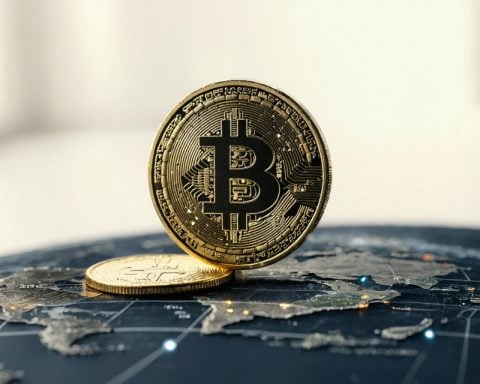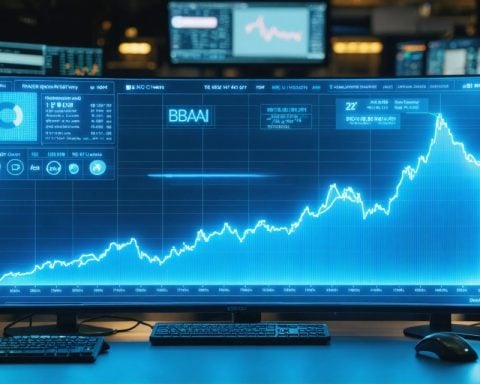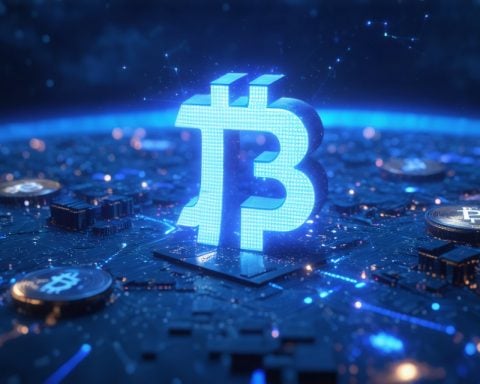- XRP is the third-largest cryptocurrency by market value, aiming to revolutionize cross-border payments.
- Ripple’s blockchain promises instant, cost-effective international transactions, challenging the traditional Swift system.
- Ripple launched Ripple USD (RLUSD), a stablecoin pegged to the U.S. dollar, enhancing transaction stability.
- A legal battle with the SEC over XRP’s status as unregistered securities casts uncertainty over Ripple’s future.
- Regulatory changes, including potential spot ETFs, could positively impact XRP’s growth prospects.
- Despite legal challenges, XRP presents investment opportunities due to its potential to disrupt international payments.
XRP captures attention not just for its position as the third largest cryptocurrency by market value, but for its potential to revolutionize cross-border payments. Ripple, the financial tech firm behind it, envisions a world where currency moves instantly over the blockchain, bypassing the traditional—and sluggish—Swift system.
Imagine transactions that buzz across borders in mere seconds and cost just a fraction of a cent. That’s the promise of XRP’s blockchain, a sharp contrast to the days-long settling times and steep fees banks incur today. Ripple recently upped the ante, launching its stablecoin Ripple USD (RLUSD), pegged to the U.S. dollar. This new addition promises to stabilize the turbulence often associated with cryptocurrencies while serving as an efficient vehicle for international transactions.
Yet, looming in the backdrop is a protracted legal tussle with the SEC. Accused of selling XRP as unregistered securities, Ripple faces an uncertain future until resolution. While this legal shadow tempers optimism, the winds of regulatory change could alter the horizon. Under new leadership, the SEC hints at a more welcoming stance towards crypto, signaling potential growth for XRP.
The stage seems set for XRP, but spot ETFs for the token remain at the gates of regulatory approval. Meanwhile, Ripple’s own innovations urge a reconsideration of how international payments are handled. As XRP navigates this turbulent legal landscape, savvy investors see opportunity. While hurdles remain, including the critical SEC lawsuit, the potential for XRP to disrupt the status quo is undeniable.
For those willing to weather the storm, XRP could represent a bold investment in a future where financial borders blur and currency flows like water.
Unlock the Future of Cross-Border Payments: How XRP Can Revolutionize Global Transactions
How-To Steps & Life Hacks
1. Setup an XRP Wallet: To get started with XRP, create a digital wallet through a service like Ledger, Trezor, or Trust Wallet. These platforms provide secure storage for your XRP tokens.
2. Purchase XRP Tokens: Acquire XRP through cryptocurrency exchanges such as Binance, Coinbase, or Kraken. Ensure you perform due diligence on transaction fees and security measures offered by the exchange.
3. Utilize ODL (On-Demand Liquidity): Businesses can integrate Ripple’s On-Demand Liquidity service to facilitate real-time cross-border transactions, reducing both time and costs associated with traditional methods.
4. Monitor Legal Developments: Stay updated on Ripple’s ongoing legal battle with the SEC through reputable finance news websites, which affects XRP’s market dynamics.
Real-World Use Cases
– International Remittances: XRP significantly reduces the cost and time required for workers to send money back home, compared to traditional banking systems.
– Corporate Settlements: Large corporations can leverage XRP for instant settlements across different subsidiaries globally, minimizing forex risks.
– Financial Institution Transactions: Banks can use XRP to streamline cross-border payments, avoiding the costly SWIFT system.
Market Forecasts & Industry Trends
The cryptocurrency market is projected to grow, with blockchain technologies being increasingly adopted by financial institutions. According to a 2022 report by Allied Market Research, the global blockchain finance market is expected to hit $21 billion by 2026, indicating a rising trend towards decentralized finance solutions Allied Market Research.
Reviews & Comparisons
– Vs. Bitcoin (BTC): While Bitcoin is the largest and most popular cryptocurrency, its transaction times and energy consumption are higher than XRP.
– Vs. Ethereum (ETH): Ethereum offers smart contracts but typically entails higher fees and slower transaction speeds than XRP.
Controversies & Limitations
The ongoing SEC lawsuit claims that XRP was sold as an unregistered security, sparking debates about its classification and future. Uncertainty in regulatory environments poses risks to investors and businesses engaged in transactions involving XRP.
Features, Specs & Pricing
– Speed: XRP transactions settle in around 4 seconds, significantly faster than Bitcoin and Ethereum.
– Scalability: XRP can handle roughly 1,500 transactions per second.
– Pricing: XRP’s value fluctuates based on market conditions and regulatory news; check market platforms like CoinMarketCap for real-time pricing.
Security & Sustainability
XRP’s network uses a consensus protocol instead of energy-intensive mining, making it more eco-friendly. It incorporates robust cryptographic algorithms to ensure transaction security, a factor that enhances its sustainability credentials.
Insights & Predictions
Experts predict potential growth for XRP as regulatory clarity improves, particularly if Ripple resolves its legal challenges. The ongoing evolution of crypto regulations is likely to open doors for XRP’s greater adoption in traditional finance sectors.
Tutorials & Compatibility
– Compatibility: XRP is compatible with various wallets and exchanges. Ensure your chosen platform supports XRP transactions before moving assets.
Pros & Cons Overview
Pros:
– Low transaction fees.
– Fast settlement times.
– Eco-friendly operational model.
Cons:
– Legal uncertainties.
– Volatile market pricing.
– Limited decentralized network compared to Bitcoin or Ethereum.
Actionable Recommendations
– Diversify Investments: While investing in XRP, consider a diversified approach, including other currencies and financial assets, to mitigate risks.
– Stay Informed: Follow reputable financial news channels to stay current on market developments and regulatory changes affecting XRP.
– Utilize Tools: Consider using tools and platforms from Ripple to facilitate efficient business transactions.
By carefully navigating the market’s volatile landscape and keeping abreast of legal verdicts, investors and businesses can potentially leverage XRP’s technology to optimize cross-border payment operations and secure a leading position in the future of finance.


















